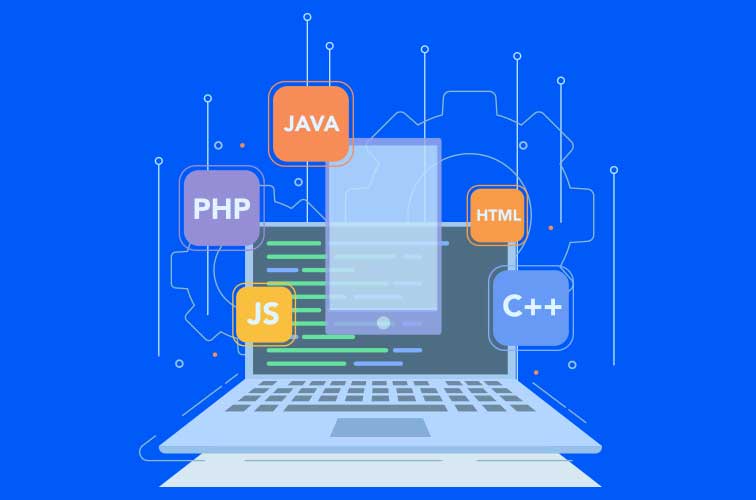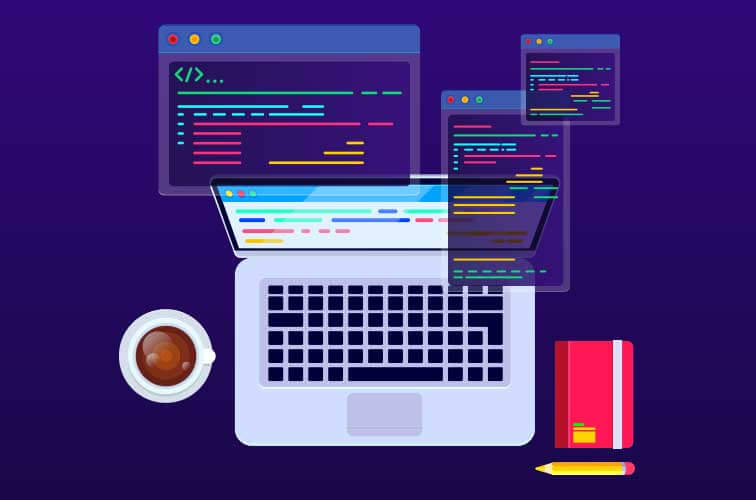This online course aims to make you master in all the basic and advanced level skills in the various tools and technologies needed for web/mobile application development using Full Stack The MEA(R)N Stack is a popular set of technologies used for building web applications. MEA(R)N stands for MongoDB, Express.js, Angular,React and Node.js.
Who Can Apply for the Course?
– Individuals with a bachelor’s degree and a keen interest to learn ML and Data Science
– IT professionals looking for a career transition as Full Stack Developers
– Professionals aiming to move ahead in their IT career
– Developers and Project Managers
– Freshers who aspire to build their career in the field of Web and Mobile Application Development
Curriculum for this Course
Module 1-- Introduction to MongoDB
- Overview of NoSQL databases and their advantages over traditional relational databases
- Introduction to MongoDB, its architecture, and key features
- Installing and setting up MongoDB for development
Module 2: Data Modeling with MongoDB
- Understanding data modeling concepts and their importance in NoSQL databases
- Understanding data modeling concepts and their importance in NoSQL databases
- Normalization techniques and data sharding for managing large and complex datasets
Module 3: CRUD Operations in MongoDB
- Mastering Create, Read, Update, and Delete (CRUD) operations for effective data management
- Using the Mongo shell and MongoDB drivers to interact with MongoDB databases
- Implementing CRUD operations using queries and modifiers
Module 4: Advanced Querying and Aggregation
- Employing advanced querying techniques using MongoDB's query operators and filters
- Utilizing aggregation frameworks, such as MapReduce and aggregation pipelines, for complex data analysis
- Performing data transformations and aggregations to extract meaningful insights from data
Express.js: Building RESTful APIs for Backend Development
Module 5: Introduction to Express.js
- Overview of Express.js, a Node.js framework for building web servers
- Setting up Express.js applications and understanding its core concepts
- Creating basic web applications with Express.js and routing HTTP requests
Module 6: Building RESTful APIs with Express.js
- Understanding the principles of RESTful APIs and their role in web development
- Designing and implementing RESTful API endpoints using Express.js
- Handling data serialization and deserialization for API communication
Module 7: Error Handling and Middleware
- Module 7: Error Handling and Middleware
- Utilizing middleware functions to enhance application functionality and perform crosscutting tasks
- Understanding the role of middleware in Express.js and its application in various scenarios
Module 8: User Authentication and Authorization
- Implementing user authentication mechanisms to restrict access to protected resources
- Integrating authentication libraries, such as Passport.js, for secure user login and management
- Understanding and implementing authorization strategies to control user privileges and actions
React
Module 9: Introduction to React
Overview of React
- React's role in building user interfaces (UIs)
- Key features and benefits of using React for web development
- Setting up the development environment and understanding React's core concepts
Core Concepts of React:
- JSX (JavaScript XML) for creating React components
- Components as the building blocks of React UIs
- Props for passing data between components
- Props for passing data between components
Module 10: Components and Data Flow in React
Mastering Components in React:
- Creating, structuring, and organizing React components
- Component communication through props and state management
- Encapsulation and data isolation to maintain modularity and component reusability
- Component lifecycle methods for managing component initialization, updates, and unmounting
Data Flow in React:
- One-way data flow in React and its implications for component updates
- Top-down data flow from parent components to child components
- Bottom-up data flow using event handlers and state updates
- React hooks for managing state and side effects
Module 11: Routing and Navigation in React
Understanding React Routing:
- The role of routing in managing navigation within SPAs
- Using React Router for defining routes and handling navigation events
Implementing Routing in React Applications:
- Creating routes and handling navigation between different pages
- Utilizing route parameters for dynamic content retrieval
- Implementing route guards for conditional navigation
Module 12: Consuming RESTful APIs with React
Introduction to API Consumption in React:
- Understanding the concept of consuming RESTful APIs in React applications
- Making HTTP requests to API endpoints using Axios or Fetch API
- Handling API responses and extracting data for UI rendering
Integrating RESTful APIs into React Components:
- Utilizing Axios or Fetch API to make API calls from components
- Handling asynchronous API responses using promises or async/await
- Displaying API data within React components using JSX and data binding techniques
Module 13:Introduction to Angular
Overview of Angular:
- Angular's role in building single-page applications (SPAs)
- Key features and benefits of using Angular for web development
- Setting up the development environment and understanding Angular's architecture
Core Concepts of Angular:
- Module system and its importance in organizing Angular applications
- Components as the building blocks of Angular UIs
- Data binding techniques for synchronizing data between components and the UI
- Directives for extending HTML elements and adding custom behavior
Module 14: Components and Data Binding in Angular
Mastering Components in Angular:
- Creating, structuring, and organizing Angular components
- Component communication through component interaction patterns
- Encapsulation and data isolation to maintain modularity and component reusability
- Component lifecycle events for managing component initialization, changes, and destruction
Data Binding Techniques in Angular:
- One-way and two-way data binding mechanisms for data flow
- Property binding for passing data from components to templates
- Event binding for handling user interactions and updating data
- Interpolation for embedding data expressions within templates
Module 15: Routing and Navigation in Angular
Understanding Angular Routing:
- The role of routing in managing navigation within SPAs
- Routing configurations using the Angular router module
- Defining routes and handling routing events for page transitions
Implementing Routing in Angular Applications:
- Creating nested routes for hierarchical navigation structures
- Implementing route parameters for dynamic content retrieval
- Implementing route parameters for dynamic content retrieval
Module 16: Consuming RESTful APIs with Angular
Introduction to API Consumption in Angular:
- Understanding the concept of consuming RESTful APIs in Angular applications
- Making HTTP requests to API endpoints using Angular's HttpClient
- Handling API responses and extracting data for UI rendering
Integrating RESTful APIs into Angular Components:
- Utilizing Angular's HttpClient service to make API calls from components
- Subscribing to HTTP observables to manage asynchronous API responses
- Displaying API data within Angular templates using data binding techniques



